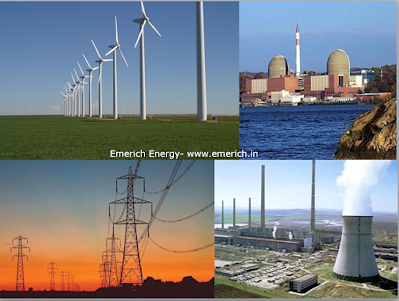Friday 6 August 2021
Tuesday 22 June 2021
The biodegradable battery
The fabrication device for the battery revolution looks quite unconspicuous: It is a modified, commercially available 3D printer, located in a room in the Empa laboratory building. But the real innovation lies within the recipe for the gelatinous inks this printer can dispense onto a surface. The mixture in question consists of cellulose nanofibers and cellulose Nano crystallites, plus carbon in the form of carbon black, graphite and activated carbon. To liquefy all this, the researchers use glycerin, water and two different types of alcohol. Plus a pinch of table salt for ionic conductivity.
A sandwich of four layers
To build a functioning supercapacitor from these ingredients, four layers are needed, all flowing out of the 3D printer one after the other: a flexible substrate, a conductive layer, the electrode and finally the electrolyte. The whole thing is then folded up like a sandwich, with the electrolyte in the center.
What emerges is an ecological miracle. The mini-capacitor from the lab can store electricity for hours and can already power a small digital clock. It can withstand thousands of charge and discharge cycles and years of storage, even in freezing temperatures, and is resistant to pressure and shock.
Biodegradable power supply
Best of all, though, when you no longer need it, you could toss it in the compost or simply leave it in nature. After two months, the capacitor will have disintegrated, leaving only a few visible carbon particles. The researchers have already tried this, too.
"It sounds quite simple, but it wasn't at all," says Xavier Aeby of Empa's Cellulose & Wood Materials lab. It took an extended series of tests until all the parameters were right, until all the components flowed reliably from the printer and the capacitor worked. Says Aeby: "As researchers, we don't want to just fiddle about, we also want to understand what's happening inside our materials."
Together with his supervisor, Gustav Nyström, Aeby developed and implemented the concept of a biodegradable electricity storage device. Aeby studied microsystems engineering at EPFL and came to Empa for his doctorate. Nyström and his team have been investigating functional gels based on nanocellulose for some time. The material is not only an environmentally friendly, renewable raw material, but its internal chemistry makes it extremely versatile. "The project of a biodegradable electricity storage system has been close to my heart for a long time," Nyström says. "We applied for Empa internal funding with our project, Printed Paper Batteries, and were able to start our activities with this funding. Now we have achieved our first goal."
Application in the Internet of Things
The supercapacitor could soon become a key component for the Internet of Things, Nyström and Aeby expect. "In the future, such capacitors could be briefly charged using an electromagnetic field, for example, then they could provide power for a sensor or a microtransmitter for hours." This could be used, for instance, to check the contents of individual packages during shipping. Powering sensors in environmental monitoring or agriculture is also conceivable -- there's no need to collect these batteries again, as they could be left in nature to degrade.
The number of electronic microdevices will also be increasing due to a much more widespread use of near-patient laboratory diagnostics ("point of care testing"), which is currently booming. Small test devices for use at the bedside or self-testing devices for diabetics are among them. "A disposable cellulose capacitor could also be well suited for these applications," says Gustav Nyström.
Story Source:
Materials provided by Swiss Federal Laboratories for Materials Science and Technology (EMPA). Original written by Rainer Klose. Note: Content may be edited for style and length.
News Article - India’s first drop in annual power demand
Pandemic causes India’s first drop in annual power demand in 15 years
Demand from state distribution utilities dropped 1.1%, marking the first such decline in records going back to 2006, data from the Central Electricity Authority show.
India’s annual electricity demand contracted for the first time in at least 15 years, as one of the world’s strictest lockdowns slashed power consumption during the early months of the year ended March.
Demand from state distribution utilities dropped 1.1%, marking the first such decline in records going back to 2006, data from the Central Electricity Authority show. Peak demand during the year rose to 190.2 gigawatts, about half of the country’s installed capacity, from almost 184 gigawatts in the prior year.
Consumption fell as businesses, offices and factories were shuttered after a nationwide lockdown was imposed in March last year. Still, power demand has rebounded as India became one of the few major economies to post growth in the last quarter of 2020, helped by a boost in government spending and the reopening of the economy. Strong demand is key for India to draw investors to its power industry as it seeks fresh capital for its clean-energy transition.
Source Courtesy: Economic Times
Tuesday 20 April 2021
Five trends that will dominate Indian power sector in 2021
While power demand is expected to slowly limp back to high-single digits in tandem with GDP growth, several over-arching fundamental trends are expected to drive the sector's transformation in 2021.
New Delhi: 2021 promises to be a year of hope and optimism. Despite the challenges of ill-fated 2020, current backdrop of recovery in global sentiment, bounce back in local demand, ample liquidity and favorable oil prices provides a supportive launchpad for India to lead the journey of economic recovery in 2021. One sector which is expected to play a crucial role in this recovery is the Indian power sector.
In the wake of the challenges of a global pandemic, nationwide lockdown, unprecedented collapse in country’s economic activity and GDP, 2020 has also left behind a lot of learnings. The world as we know it has changed and with it has emerged a new perspective to face challenges by constantly evolving and pre-empting the changing need of the consumers and businesses. While the power demand is expected to slowly limp back to high-single digits in tandem with GDP growth, several over-arching fundamental trends are expected to drive the sector transformation in 2021:
1.Technology: The catalyst
Historically, Indian power sector has been characterized by power-cuts, economic losses, system inefficiencies and archaic last mile networks. While the sector has been undergoing an overhaul over the last few years, the coronavirus pandemic underscored the need of accelerated technological upgradation. Going forward, the focus on implementation of smart technologies like an evolved grid system, smart metering, digital asset management will help transform the seemingly traditional, manpower-heavy sector into a smarter, more efficient power system with each element in the value chain re-imagining their processes and streamlining infrastructure.
2.Green Energy: The way forward
Renewable energy is expected to form 70% of fresh capacity expansion expected over the next 5 years. This would help achieve India’s commitment to increase renewable share in total generation to 40% by fiscal 2030 from current 25% as part of the Paris climate deal. According to International Energy Agency (IEA), India would be the largest contributor to the renewable upswing in 2021, and the country’s annual additions are expected to double in 2021 compared to 2020. Strong government focus which is evident from the fiscal and regulatory incentives, viability gap funding and execution support in terms of land and evacuation infrastructure is expected to support this upswing. Apart from the support for setting up new capacities, the government has lent significant comfort to private investors by ensuring better payment security mechanism and enforcement of signed PPAs to avoid tariff-related disputes. While most of the upcoming PPAs under the central level schemes have at least two layered payment mechanisms (i.e. letter of credit and payment security funds), going forward with the finalization of competitive bidding guidelines by MNRE, even state nodal agencies and discoms will have to keep provisions for dual payment security mechanism. Additionally, the improved availability of low-cost finance will fuel the capacity addition and help sustain the private sector interest. Sizeable investments are also expected in improving the energy storage solutions and dynamic load management which would help in maintaining constant generation, thereby producing a smooth generation curve and reducing a sharp ramp–up or ramp-down for other plants connected to the grid.
3.Transmission: The missing link
Historically, a lion's share of investment in power sector has flown into adding generation capacities. But in order to ensure reliable and uninterrupted flow of electricity, every megawatt of new generation capacity needs to be matched with a certain transformation capacity added to the system. Going forward, significant development in the transmission sector would be triggered by the aggressive renewable expansion plans. Large scale grid connected solar and wind plants are usually located in the far-flung areas, where there is limited existing transmission infrastructure. Renewable power generating companies have urged for adequate grid availability in the past. This will urgently need an expansion of grid connectivity in the next two years to be able to accomplish the renewable energy target. Furthermore, rising private sector participation with favourable risk-return profile of transmission projects will also support growth in transmission sector in India. With the renewed government focus on alleviating congestion, providing reliable power to all and strengthening inter-regional grid availability, transmission capacities are expected to grow at a robust pace in 2021.
4.Private participation : The fuel for future growth
Over the last few months, we have witnessed a liquidity glut across major economies on the back of fiscal support by central banks. This liquidity is chasing returns and higher yields which augments well for India as India has managed to recoil from the shock of coranavirus faster than other country. This, coupled with the under-penetration, favourable demographic and govt's atmanirbhar push puts India firmly on an accelerated growth plan and makes India a compelling investment opportunity for foreign capital hungry for growth. A huge amount of this foreign capital is expected to flow into Indian infrastructure sector. One mode which is expected to facilitate this flow is InvITs and REITs.
5. Policy reforms: Unfinished business
Over the last few years, Indian power sector has undergone a significant transformation that has redefined the industry outlook through path-breaking policy initiatives like UDAY, Power for All, UJALA, among others. While discoms reforms have achieved limited financial success, recent policy reforms like payment security mechanism, power-cut penalization, Electricity Amendment Bill will go a long way in bringing in efficiencies into the sector. India has already kick-started the process of privatization of its power distribution territories in the union territories (UTs), with bids being called for purchase of entire 100% stake in the Chandigarh discom. But going forward, a similar privatization drive for state transmission companies should be undertaken to free-up government capital and allow parity with industry efficiency. The government may also want to re-initiate discussions around “carriage and content separation” which would effectively allow end-consumers to choose who they want to buy electricity from, similar to the way telecom operators work. This would usher in competition, forcing discoms to improve their performance standards, and adopt a more consumer-centric approach rather than remain geographical monopolies.
[This piece was authored by Harsh Shah, Chief Executive Officer, IndiGrid]
Source :ETenergyworld
Monday 19 April 2021
Invitation to the Knowledge Expo 2021 (3D virtual platform) organized by TecKXpert Group: 17 April - 17th May, 2021
We Cordially Invite you to register and Visit Our 3D
Virtual Stall - Click the below link
Subscribe to:
Posts (Atom)





